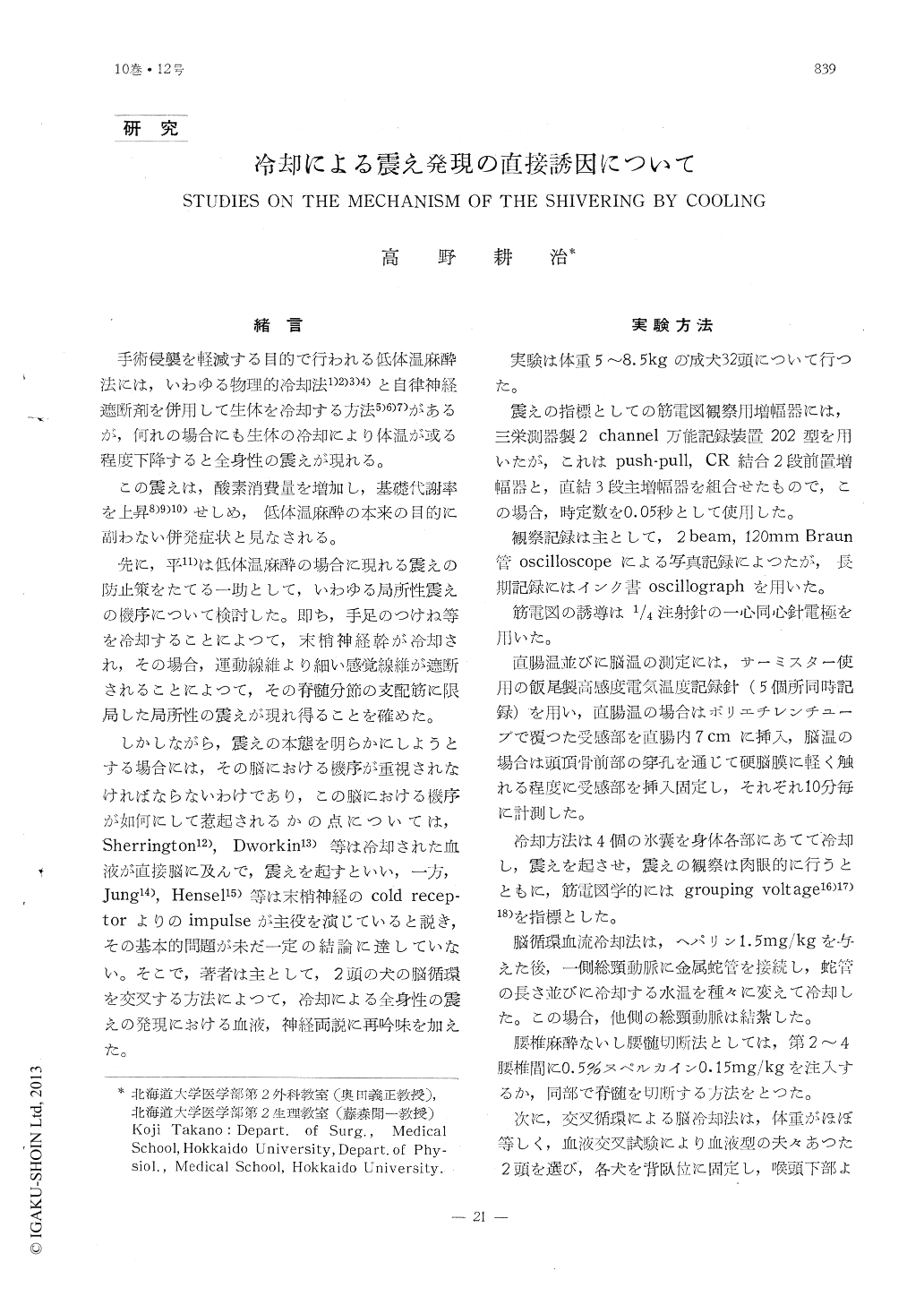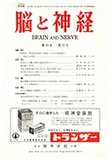Japanese
English
- 有料閲覧
- Abstract 文献概要
- 1ページ目 Look Inside
緒言
手術侵襲を軽減する目的で行われる低体温麻酔法には,いわゆる物理的冷却法1)2)3)4)と自律神経遮断剤を併用して生体を冷却する方法5)6)7)があるが,何れの場合にも生体の冷却により体温が或る程度下降すると全身性の震えが現れる。
この震えは,酸素消費量を増加し,基礎代謝率を上昇8)9)10)せしめ,低体温麻酔の本来の目的に副わない併発症状と見なされる。
There have been two theories about the machanism of shivering by cooling: (1) certain chemical substances produced in the periphery may affect the brain through the blood ve-ssel, (2) the afferent nerve impulse from the periphery may elicit the shivering.
Experiments were conducted on 32 adult dogs in order to scrutinize these two theories.
(1) In a group of dogs, a polyethyren tube was connected between the cut ends carotid artery of one side. When the blood supplyi-ng the brain was cooled by cooling the tube, shivering appeared at much lower rectum te-mperature (2.5~3.0℃) than when the body was cooled (1.1~1.8℃).
(2) Shivering was recognized in the upper extreminities by cooling the lower extremiti-es in cases in which lumber anesthesia or transection of the spinal cord had been con-ducted.
However rectum temperature at which the shivering appeared was much lower in these cases (2.8~3.2℃) than usual cases (1.1-1.8 ℃).
(3) A pair of dogs was prepared in which anastomoses of the carotid arteries and jugu-lar veins of one side of each dog were made, so as to enable the brain of one dog to be supplied by the blood of the other dog.

Copyright © 1958, Igaku-Shoin Ltd. All rights reserved.


